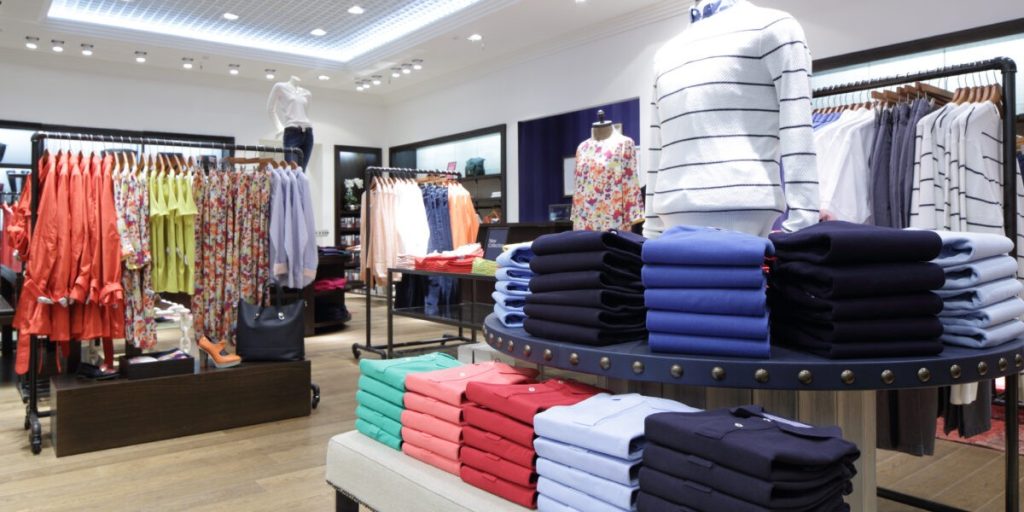
Considering the prevalence (and incredible convenience) of online retail outlets such as Amazon, it’s no surprise that these channels are gaining popularity. In fact, a whopping 81% of shoppers research products online prior to completing a purchase, causing retailers with brick and mortar shops to grow increasingly creative – with even more compelling offers – in an effort to nudge prospective shoppers out of their homes (and their footie pajamas), and actually into stores. As a result, creating emotional and visual intrigue and really connecting with your target demographic has become even more critical to a brand’s marketing strategy – due in large part to the digital shopping cart.
This desire to be blown away (and out of those comfy pj’s) by in-store design hasn’t emerged out of nowhere; in fact, it’s part of my biology… and part of yours, too. It’s well documented that as a group, humans tend to make purchasing decisions based largely on this type of emotional connection. We’re actually hard-wired to pursue certain stimuli, and it’s this arousal and consumer intrigue that honestly compels us to spend money, initiating purchases that we often weren’t planning on making. (Those retailers are onto something, aren’t they?) Truth be told, this is why I can’t simply walk past the Brooks Brothers window display without feeling the urge to stop in for a quick gander around the store – only to find myself at the checkout with yet another button down shirt, perfectly starched pair of khakis, or a stylish new sport coat.
Furthermore, there really is both an art and a science to creating effective retail visual merchandising displays. On the artistic side, the BIGEYE team encourages our clients to design expressive displays that create a sense of awe and intrigue – driving the target customer to connect with the brand so much so, that they cannot possibly return home empty-handed. However, on the more scientific side, we rely on facts and data to determine what will drive customers into a store, drawing from fields as diverse as neuroscience, anthropology (this time, the study of humans, past and present), and psychology. It seems to harken back to the old advertising industry adage, often quoted by the “original Don Draper” himself, David Ogilvy that, “It’s not creative unless it sells.” Typically, this expression pertains largely to copywriting, but upon further contemplation, we think it especially holds true for retail visual merchandising component, as well.
According to a 2014 research report from Merzer, the physical store environment is an important element in retail decision-making, as 75% of purchases are unplanned or made on impulse. How many times have you gone in to Target for “just one thing,” only to end up in a busy checkout lane, complete with a fully loaded shopping cart? This is telling, as is shows us the power of a well-designed store, and to a more concentrated degree, the presentation of the in-store displays themselves. Our goal, then, as marketers, is to enhance this experience, so much so that we’re building the retailer to consumer connection, and ensuring that the correct messaging is being delivered to the desired customer – as component of the overall branding experience.
Specifically, when it comes to retail visual marketing, the questions that we specifically want to answer boil down to:
- Which brand elements are going to generate the greatest degree of interest from our target market?
- How can we best appeal to a relatively broad demographic that represents our ideal customer?
- How are we able to develop a display that entices our target demographic to select products proffered by our brand – and to complete a purchase – versus choosing the competitor’s product?
- What is our audience seeking when selecting specific companies, brands, products, and services – and how do we connect on an emotive level?
- Which specific marketing elements may we incorporate into our overall strategy to build awareness, and to ensure that our brand is perceived as a differentiator?
We all know that with the hustle and bustle of our lives, we find that we’re busier than ever before, and in this digital era, it’s imperative to design a display that will capture a consumer’s attention – and fast. After all, your brand may not only be in heated competition with other brick and mortar retailers, but also with the plethora of online shopping options. Although the online landscape was once presumed to be the end of the storefront, it’s now evident that shoppers want to continue to engage in heightened brand connections through in-store experience shopping. Companies are event able to employ sophisticated marketing techniques to combine their in-store displays with innovative digital campaigns to take advantage of capturing new customers in both stratospheres, developing a perfect media mix.
Oftentimes, we hear about retailers who have not yet partnered with a developed marketing team, and as a result, they fail to understand the connection between their in-store displays, and the impact on ROI. As marketing experts, we are armed with the knowledge and experience to tap into the human psyche to drive individuals to make purchases. Not only are we able to provide the necessary expertise to encourage optimization of these displays for success; we are also able to use purchasing information to better analyze the ongoing success of these recommendations. When it is determined that an initial strategy needs further thought and strategy, we’re poised to complete the additional testing required to maximize revenue opportunities – developing insights that inform and enhance a brand’s overall marketing strategy.
If your brand is seeking highly effective retail visual merchandising strategies, BIGEYE is well-equipped to partner with you. We’ll ensure that your retail environment is an immersive brand experience that truly connects with your target consumer and drives them to purchase. Contact us today by calling 407.839.8599.


